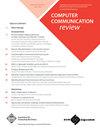Recent Trends on Privacy-Preserving Technologies under Standardization at the IETF
IF 2.8
4区 计算机科学
Q3 COMPUTER SCIENCE, INFORMATION SYSTEMS
引用次数: 2
Abstract
End-users are concerned about protecting the privacy of their sensitive personal data that are generated while working on information systems. This extends to both the data they actively provide including personal identification in exchange for products and services as well as its related metadata such as unnecessary access to their location. This is when certain privacy-preserving technologies come into a place where Internet Engineering Task Force (IETF) plays a major role in incorporating such technologies at the fundamental level. Thus, this paper offers an overview of the privacy-preserving mechanisms for layer 3 (i.e. IP) and above that are currently under standardization at the IETF. This includes encrypted DNS at layer 5 classified as DNS-over-TLS (DoT), DNS-over-HTTPS (DoH), and DNS-over-QUIC (DoQ) where the underlying technologies like QUIC belong to layer 4. Followed by that, we discuss Privacy Pass Protocol and its application in generating Private Access Tokens and Passkeys to replace passwords for authentication at the application layer (i.e. end-user devices). Lastly, to protect user privacy at the IP level, Private Relays and MASQUE are discussed. This aims to make designers, implementers, and users of the Internet aware of privacy-related design choices.IETF标准化下隐私保护技术的最新趋势
终端用户关心如何保护他们在使用信息系统时产生的敏感个人数据的隐私。这扩展到他们主动提供的数据,包括个人身份信息,以换取产品和服务,以及相关的元数据,如不必要的访问他们的位置。这就是当某些隐私保护技术出现时,互联网工程任务组(IETF)在将这些技术整合到基础层面上发挥主要作用。因此,本文概述了目前IETF正在标准化的第3层(即IP)及以上层的隐私保护机制。这包括第5层的加密DNS,分为DNS-over- tls (DoT)、DNS-over- https (DoH)和DNS-over-QUIC (DoQ),其中QUIC等底层技术属于第4层。然后,我们讨论了隐私通行证协议及其在生成私有访问令牌和passkey中的应用,以取代应用层(即终端用户设备)的身份验证密码。最后,为了在IP层保护用户隐私,讨论了专用中继和掩码。其目的是使设计者、实现者和Internet用户意识到与隐私相关的设计选择。
本文章由计算机程序翻译,如有差异,请以英文原文为准。
求助全文
约1分钟内获得全文
求助全文
来源期刊

ACM Sigcomm Computer Communication Review
工程技术-计算机:信息系统
CiteScore
6.90
自引率
3.60%
发文量
20
审稿时长
4-8 weeks
期刊介绍:
Computer Communication Review (CCR) is an online publication of the ACM Special Interest Group on Data Communication (SIGCOMM) and publishes articles on topics within the SIG''s field of interest. Technical papers accepted to CCR typically report on practical advances or the practical applications of theoretical advances. CCR serves as a forum for interesting and novel ideas at an early stage in their development. The focus is on timely dissemination of new ideas that may help trigger additional investigations. While the innovation and timeliness are the major criteria for its acceptance, technical robustness and readability will also be considered in the review process. We particularly encourage papers with early evaluation or feasibility studies.
 求助内容:
求助内容: 应助结果提醒方式:
应助结果提醒方式:


